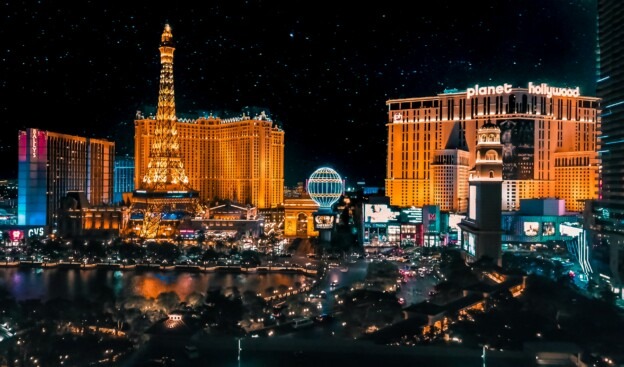Las Vegas 2023 Unmasked: How F1's Dazzling Spectacle Delivered Thrills Beyond the Track

In the aftermath of the first-ever Las Vegas Grand Prix, Formula One finds itself at a crossroads, reflecting on a race that blended the razzle-dazzle of Sin City with unexpected challenges. While the event wasn’t quite perfect, it managed to deliver a spectacle that surpassed expectations on the racing front.
But how did this brand-new event stand out from all the rest on the F1 racing calendar? What could it have done better? And can we expect to see it as a permanent racing fixture now?
This article attempts to answer all three questions as we assess one of the most talked-about racing events of all time.
The Perfect Showcase
When the inaugural Las Vegas F1 event was announced, Formula 1 bosses received criticism from onlookers who saw the race as little more than a gimmick. What does a city that specializes in partying and gambling know about the world’s most popular racing sport?
However, organizers saw the growing popularity of Sin City as the perfect showcase. The rise of online casinos and the pandemic has had no effect on Vegas visitor numbers, which have recently beaten pre-COVID highs. Vegas seems to be going through a boom period making it a great time to host its first-ever F1 event.
Much of the pre-event hype centred on the city’s unique track. Nestled in the vibrant heart of Las Vegas, this 6.2km, 17-turn street circuit winds its way past iconic landmarks like Caesars Palace, the Bellagio, and the Venetian.
The racing pedigree of Las Vegas was not a novelty, however; the city previously hosted the Caesars Palace Grand Prix in 1981 and 1982. Serving as the season finale on both occasions, the circuit witnessed historic moments, including Alan Jones' triumph in 1981 and Michele Alboreto's maiden victory for Tyrrell in 1982. These races also saw Nelson Piquet and Keke Rosberg securing championship titles with fifth-place finishes.
It wasn’t just the track that got people talking. Ticket prices hit record highs with some of the most luxurious packages the sport has ever seen and organizers built permanent pit and paddock facilities.
It was no surprise, then, that the event came with record levels of hype and excitement.
Fever Pitch
When the race came around, excitement reached fever pitch as the whole world tuned in. High-profile attendees, pop-up shops, and lucrative auctions, including items from Lewis Hamilton and Tom Brady, added to build-up.
Good job, then, that the race itself lived up to the hype. Max Verstappen, overcoming both a penalty and a collision with George Russell, fought tenaciously to secure his 18th victory of the season. The race, a thrilling contest between Verstappen, Charles Leclerc, and Sergio Pérez, provided the adrenaline-pumping spectacle F1 had yearned for.
For Formula One, acting as both promoter and organizer for the first time at an estimated cost of $700 million, this was more than just a race; it was a Super Bowl moment, a bold step in winning over the American market. The gamble paid off with the track proving to be exhilarating, allowing aggressive driving and captivating overtakes, of which there were 82 in total.
Verstappen, despite his initial doubts about the event’s hype, couldn't resist singing along to "Viva Las Vegas" as the team celebrated.
Amid the celebratory fireworks, it looked like F1 had not just staged a race; they had ignited a spark for the future of the event in Vegas. Former F1 champion Jenson Button even hailed it as the best street circuit on the calendar.
Formula One might have just witnessed a game-changer on the American stage.
The Future of Vegas F1
As successful as the event was, the future of the event is not clear-cut just yet. Locals raised concerns about disruptions and event organization, accusing F1 of favoring European attendees with late-night start times and expensive tickets. If anti-event campaigns gather momentum, then F1 organizers may have a fight on their hands to keep the event ticking over.
Yet despite these hurdles, F1 President Stefano Domenicali and Las Vegas Grand Prix CEO Renee Wilm have made it clear they aim to address these concerns. The $500 million contract to bring F1 to Sin City for the next decade reflects a major investment by Liberty Media, with the famous Las Vegas Strip incorporated into the racing course, requiring $80 million in roadwork costs. The event is anticipated to contribute over $1 billion to the local economy, breaking betting records at casinos like Ceasars Entertainment.
Is Las Vegas Grand Prix about to become a pivotal event in the F1 calendar? You shouldn’t bet against it.
✅ Check out more posts with related topics:













LAST 3 F1 Fan COMMENTS